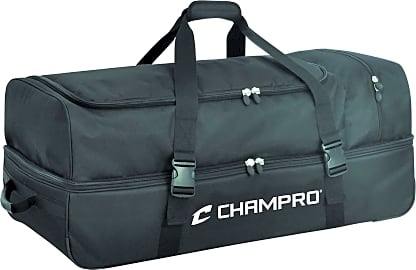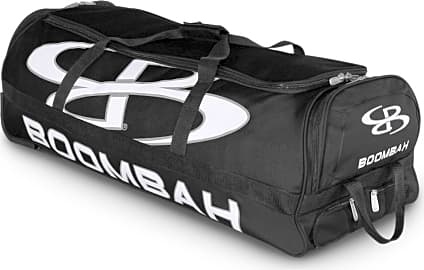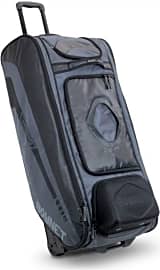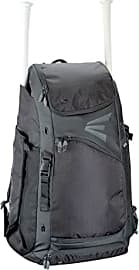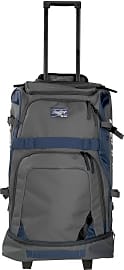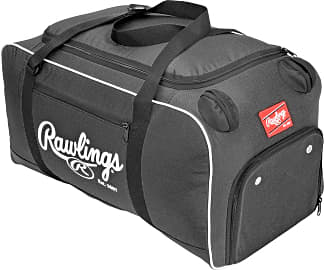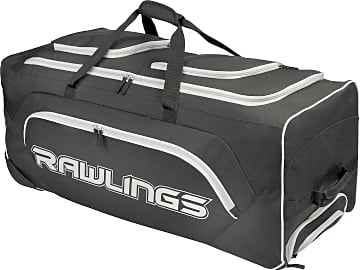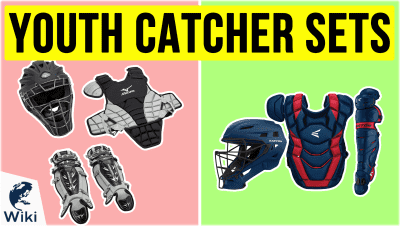The 10 Best Catcher's Bags

This wiki has been updated 38 times since it was first published in July of 2015. Playing baseball can be a lot of fun, but hauling all that equipment around is another story. Stay organized and get your bats, helmet, face guard, and chest protector to the game safely and securely by investing in one of the handy catcher's bags featured here. You'll find options to match a range of budgets and skill levels, and they come in tons of different colors, too. When users buy our independently chosen editorial recommendations, we may earn commissions to help fund the Wiki.
Editor's Notes
December 17, 2020:
For this update, we removed the Rawlings Workhorse, Maxops Cheetah Camouflage, and Mizuno Samurai due to availability concerns. We also replaced the No Errors E2, a wheeled model that had accrued significant complaints about the durability of its zippers.
We added the Rawlings Covert, a budget-friendly option that still has the space for all your catching equipment. It doesn’t have a lot of bells and whistles, but if you don’t have the budget for a higher-end model, this bag would be a great choice.
We also added two backpack-style options, the Easton E610CBP and Rawlings R1801. These are not only easier to fit into car trunks for travel, but can also be worn while riding a bike, something that wouldn’t be possible with a duffel-bag-style or wheeled bag.
If you’re looking to upgrade your current gear, you may want to consider one of these youth catcher sets. They all include a helmet, chest protector, and leg guards, at a range of prices and styles. Or, one of these youth baseball bats could also make a great addition to your new bag.
April 19, 2019:
In creating this list of the best catcher's bags on the market, including options that feature ample storage space — particularly separate compartments — was a primary concern. Other practical details like odor-fighting technology, identification card slots, and durable, puncture-resistant fabric were prioritized during the compilation process.
The Bownet Commander was added to the list because of its sturdy construction and popularity among baseball players of various skill levels. In general, the products featured here are designed to last for quite a while. Considering the seasonal nature of baseball, these bags should survive several years of regular use from spring through fall. Even when loaded with multiple bats and additional heavy gear, you should be able to count on any one of these bags to stand up to wear and tear remarkably well.
The Greatest Catchers Of The MLB
Mike Piazza is considered one of the greatest catchers of the recent era, and was also an amazingly strong offensive player.
The catcher might be one of the most underrated positions in all of professional sports. Without a reliable catcher on the receiving end of the throw, Nolan Ryan would never have thrown his record seven no-hitter games. (He also holds the record for strikeouts at an astonishing 5,714.) Without a great catcher, Roger Clemens might not hold a record seven Cy Young Awards. And no pitcher would ever have a perfect game to his name had his catcher allowed for that dreaded uncaught third strike ball to get away from his glove.
Yet catchers always tend to stand outside the spotlight when it comes celebrating Major League Baseball's greatest players. There are exceptions, of course: first in mind is often the immortal Yogi Berra, whose off-the-field reputation for memorable quips and an irrepressibly sunny disposition has done as much to burnish his legacy as his powerful hitting and adroit play behind home plate. Berra was the catcher for the famous perfect game pitched by Don Larsen during the 1956 World Series, another moment that helped cement his legacy.
Mike Piazza is considered one of the greatest catchers of the recent era, and was also an amazingly strong offensive player. Piazza drove in more than 425 home runs during his sixteen-season career in the MLB, and maintained a .308 batting average with an impressive 1,335 runs batted in during his years playing the game. Piazza was named as an All-Star player for ten years in a row, a feat achieved by few players.
But perhaps the greatest catcher to yet grace the baseball field is a man named Johnny Bench. Bench played professional baseball between 1967 and 1983, spending his entire career with the Cincinnati Reds. He played with the Reds during two World Series victories, he was a fourteen-time All-Star player, and he was elected to the Baseball Hall of Fame with his name appearing on an impressive 96 percent of ballots cast preceding the 1989 inductions -- that ranks as the third highest percentage yet recorded.
Tomorrow's Hall of Fame catchers are coming up through today's ranks of Little League, high school, and college baseball programs. Before they can get to Cooper's Town, though, they need a way to haul their gear to the ball field. The best way for a catcher to do that is by using a dedicated catcher's bag.
Choosing The Right Catcher's Bag
The type of baseball player for whom a catcher's bag is intended should have a direct impact on which bag is the right choice. That is not to say what position they play, but rather what type of catcher he or she is: namely, a primarily defensive player or an offensive player. Some catcher's bags have straps or side pockets suitable for toting one or two baseball (or softball) bats, while others have dedicated compartments that can hold as many as four bats. For the catcher who also has some serious hitting ability, a bag able to carry multiple bats is important. For the player who merely wants to get through their at-bats and get back behind the plate, bat carrying is less important.
For others, the lower cost of a simpler bag might be highly attractive.
What is important for all players is to choose a bag they can comfortably move about even when it is fully loaded. Many catcher's bags have built in wheels and handle systems that make them easy to roll down the sidewalk, across the street, and into the ballpark, but others must be carried by hand. For a younger and/or smaller player, these latter options might not be viable. For others, the lower cost of a simpler bag might be highly attractive.
Beyond the basics like wheels versus carry-only options, consider the gear in your personal player's kit and then compare it to the carrying capacity and pocket and compartment arrangement of a bag you are considering. If you bring along more than one glove or more than one pair of shoes, make sure there is suitable space to keep those items separate. And be sure to consider where the bag is going, too. Choose a bag that can fit into locker space at the field if need be–especially if you play on a traveling team–and that can easily be stored away at home, as well.
Other Uses For A Catcher's Bag
Just as you're allowed to put other things than legal briefs in a briefcase and more than just cash in a billfold, so too can you use a catcher's bag for much more than just the accoutrements that a baseball (or softball) catcher might need. First and foremost, consider using your catcher's bag for toting other sporting equipment.
Many such bags are suitable for carrying tennis or squash rackets, or for field hockey or lacrosse sticks.
Many such bags are suitable for carrying tennis or squash rackets, or for field hockey or lacrosse sticks. The ample room inside a catcher's bag can accommodate the pads used for lacrosse as well, or can be filled with cleats, shin guards, and even a ball or two for the soccer player.
In a pinch, a catcher's bag designed to hold several baseball bats could even carry golf clubs. And, of course, these bags are more than suitable for use as a gym bag, especially given the ventilated pockets many of them feature, which are perfect for carrying those sweaty clothes you peel off after your workout.
The sturdy walls and ample storage space of a catcher's bag also make them good options for use as duffel bags during travel. Their wheels allow for easy movement down city streets or through airports or train stations, and their multiple pockets allow for easy organization of your clothing, toiletries, and other sundry items.


